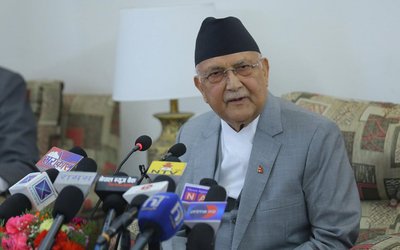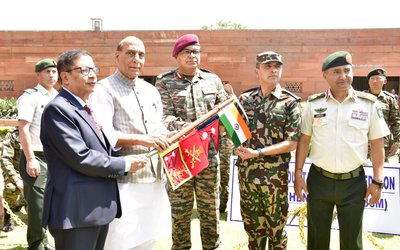More on National



Like in the past, the Ministry of Tourism and Civil Aviation constituted a five-member probe committee to find the reason behind the accident of an Agni Air plane. The Civil Aviation Authority repeated its assurance that it will increase air safety measures amidst the the flood of condolence messages and stories about the crew members and the departed souls.
Again, this ritual is not going to improve air safety, nor will it bring any tangible results. As commercial flights in STOL airports like Jomsom, in the difficult terrains and weathers, increase, the risk of accidents are starker.
Even the Civil Aviation Authority officials agree on this. Due to profit reasons, no airline follows the basic security guidelines in flying to and from airports like Jomsom and Lukla, where there is a huge pressure of passengers. Airlines operators want to fly their airplanes as many times as possible. This rush is often the reason behind such crashes.
“We need to follow the strict air safety measures to fly to airports like Jomsom. We have to keep in mind the terrains, geographies as well as the weather,” said captain K.B. Limbu, former general manager of Nepal Airlines.
Generally, it is always hostile to fly to Jomsom after 10 due to heavy winds. However, the airline operators compromise this security concern when they see profits in carrying the passengers.
At a time when the number of accident is growing in the STOL airport, the government needs to implement standard air safety measures. Given the present political scenario, it is virtually impossible for the regulating authorities, who have to work under a tremendous pressure.
Fifteen people -- 13 Indian pilgrims and two Nepali crew members -- died in the plane crash at Jomsom airport in Mustang district, Monday.
The Agni Air Dornier carrying 18 passengers -- 16 Indian pilgrims and two Danish nationals -- was trying to return to Pokhara after failing to land at Jomsom airport due to some technical problem in the morning. Six of the 21 people on board -- three Indian nationals, the two Danes and air-hostess Roshani Haiju -- miraculously survived the crash.
According to Chief District Officer (CDO) of Mustang Laxmi Raj Sharma, 11 people died on the spot and four more breathed their last while undergoing treatment at Mustang Hospital. A Tara Air plane that reached Mustang soon after the crash brought the six injured to Pokhara for treatment. Five of the six injured are in normal conditions.
The Agni Air Dornier (9N AIG - D228), which took off from Pokhara airport at 9:30 a.m., collided into a hill at 9:46 a.m. The hill is about 500 meters north of Jomsom airport. "The front of the plane hit the hill first," CDO Sharma said.
According to Sharma, the bodies were not badly mangled even though the plane itself disintegrated. "Some portions of the plane and some of the bodies plunged into a gorge," he said. "That was why we found it a bit difficult carrying out the salvage work. As a whole, the rescue and salvage work was very effective. This was perhaps the fastest such response during any plane crash. The rescue team was in action in 15 minutes after the crash."
A travel agency had chartered two planes of Agni Air on Monday for people on a pilgrimage to Muktinath temple. The plane that crashed was on its eighth flight to Mustang.
Cause of crash
It is believed the plane crashed after turning in a wrong direction while flying low upon encountering some problem with light indication. Pilot Pathak had sought permission from Air Traffic Control, Jomsom at 9:45 a.m. to return to Pokhara after experiencing the technical problem.
"The pilot informed us that he was to return to Pokhara following some technical problem with the light indication," air traffic controller at Jomsom Airport Shiva Sharma said. "Unfortunately, the plane crashed within a minute."
Air Traffic Control had instructed the pilot to turn to Pokhara only after flying a few meters further ahead. But the plane made a sharp U-turn, and that is believed to have caused the crash.
"The crash could have been averted if the pilot had landed at Jomsom instead of trying to turn back to Pokhara," Sharma said.


